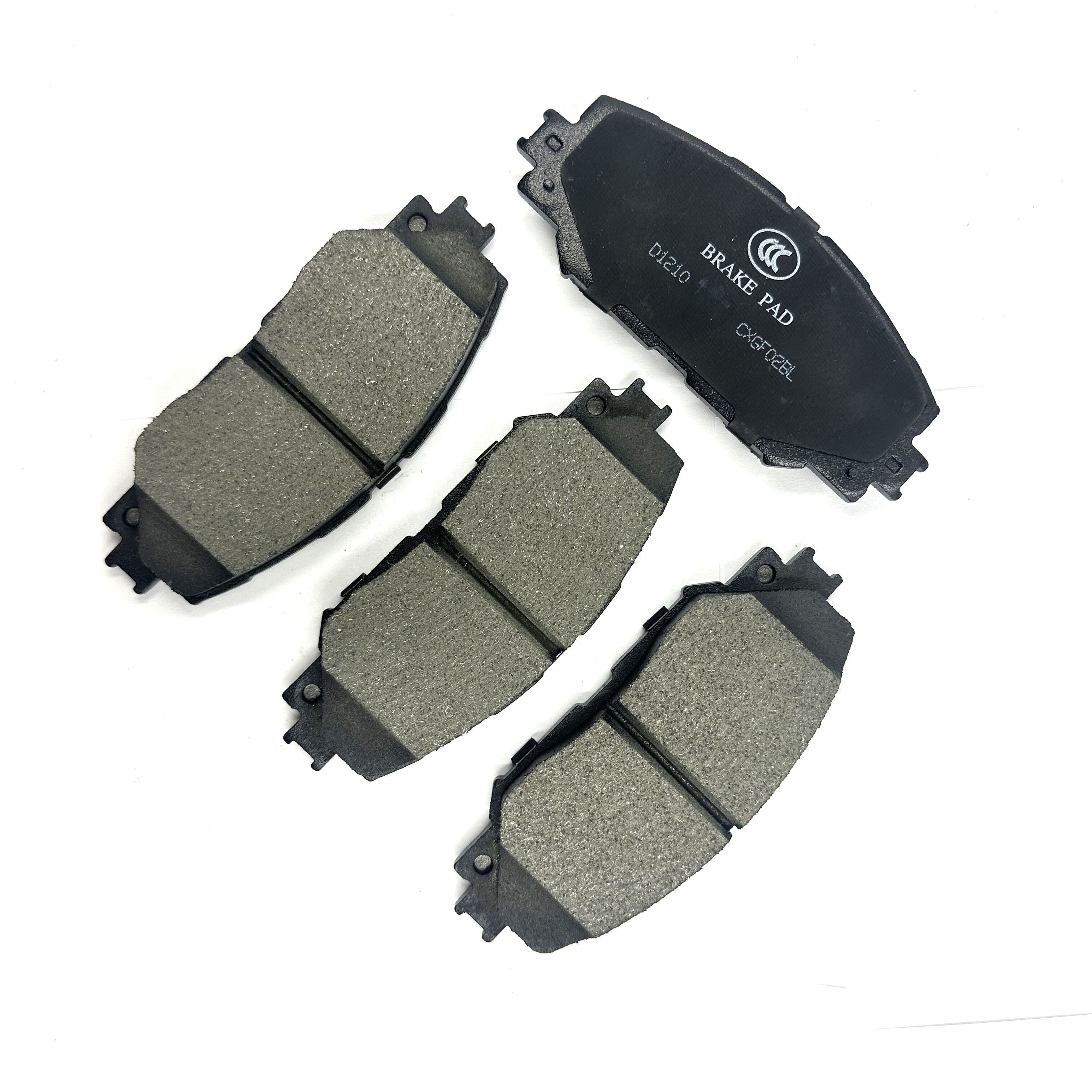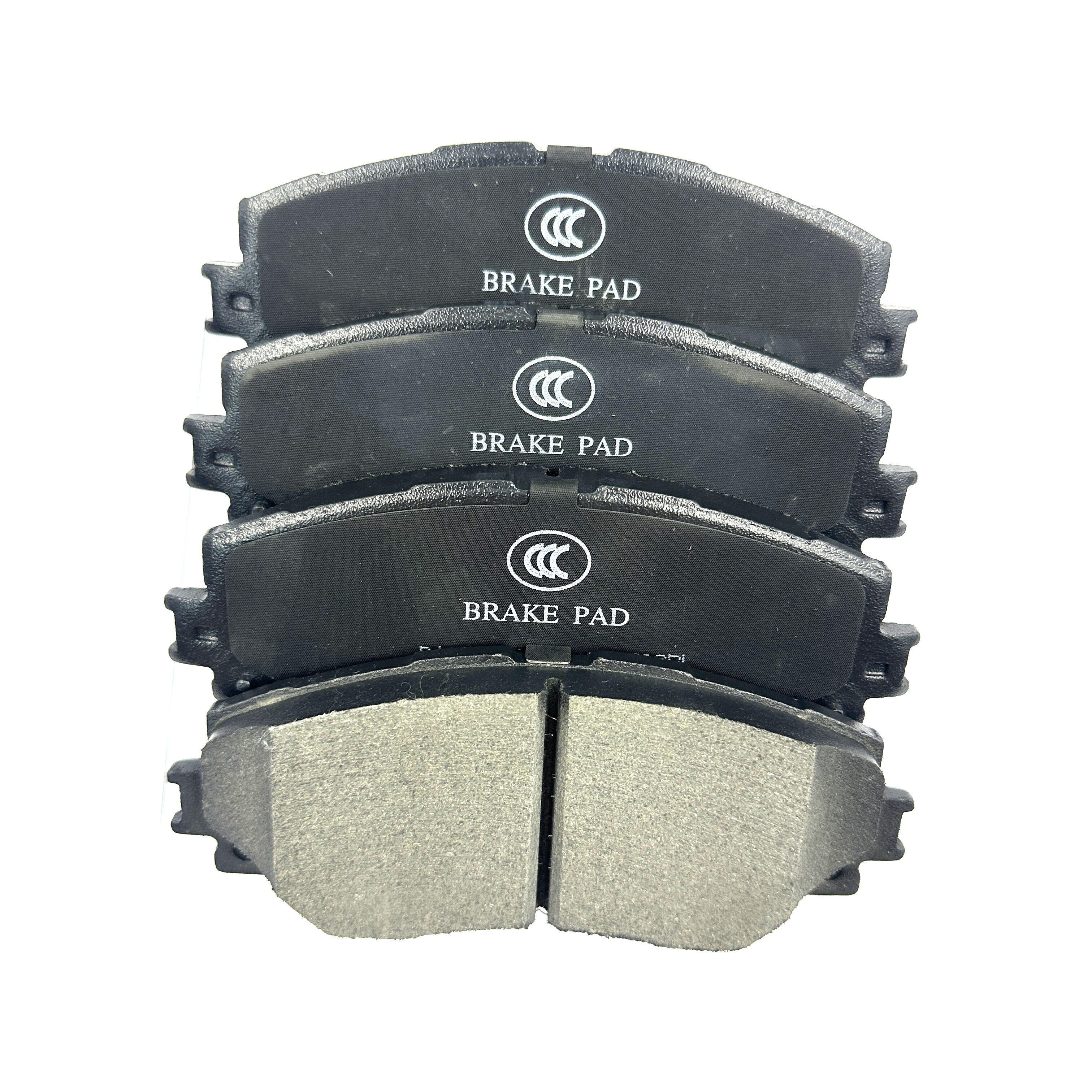How to Choose the Right Semi-Metallic Brake Pads for Your Car
Semi-metallic brake pads are a popular choice for many drivers, thanks to their durability and strong performance. But with so many options on the market, picking the right set for your car can feel overwhelming. Whether you drive a daily commuter, a sports car, or a heavy SUV, the right semi-metallic brake pads depend on your driving style, vehicle type, and needs. Let’s break down the key factors to consider when choosing semi-metallic brake pads, so you can make a confident decision.
1. Match the Semi-Metallic Brake Pads to Your Vehicle Type
Not all semi-metallic brake pads are the same—they’re designed to handle different vehicle weights and performance levels. Start by considering your car’s size and use:
- Small to mid-size cars (sedans, hatchbacks): These lighter vehicles don’t need the heaviest duty semi-metallic brake pads. Look for pads with 30–40% metal content. They offer good stopping power without being too hard on rotors, making them ideal for daily driving.
- SUVs, trucks, or vans: Heavier vehicles need stronger pads to handle their weight. Choose semi-metallic brake pads with 50–60% metal content. The extra metal increases durability and heat resistance, which is crucial for stopping heavy loads or towing.
- High-performance or sports cars: These cars need pads that handle aggressive driving and high speeds. Opt for semi-metallic brake pads labeled “performance” or “track-ready,” with 40–50% metal. They offer better heat resistance to prevent fade during hard braking.
Always check the product description to ensure the semi-metallic brake pads are rated for your vehicle’s weight and performance level. Using pads meant for a small car on a heavy truck can lead to premature wear or poor braking.
2. Consider Your Driving Style
Your daily driving habits play a big role in choosing the right semi-metallic brake pads. Think about how and where you drive:
- Daily commuting (city or highway): If you mostly drive in stop-and-go traffic or at steady highway speeds, look for “street” semi-metallic brake pads. They’re designed for smooth, quiet performance and moderate durability. These pads have a lower metal content (30–40%) to reduce noise and rotor wear.
- Aggressive driving (fast acceleration, hard braking): If you often speed up and slow down quickly, or enjoy winding roads, choose “performance” semi-metallic brake pads. They have higher metal content (40–50%) for better heat resistance and faster “bite” (immediate stopping power when you hit the brakes).
- Towing or carrying heavy loads: For trucks or SUVs used to tow trailers, haul cargo, or carry multiple passengers, heavy-duty semi-metallic brake pads are a must. These have 50–60% metal to handle the extra stress of stopping heavy weights, reducing wear and fade.
3. Check the Metal Content and Materials
Semi-metallic brake pads get their name from their blend of metal and organic materials. The type and amount of metal affect performance:
- Metal percentage: As a general rule, higher metal content (50–60%) means better heat resistance and durability but more noise and rotor wear. Lower metal content (30–40%) is quieter and gentler on rotors but less durable under stress. Choose based on your vehicle and driving style (see above).
- Types of metal: Most semi-metallic brake pads use steel, copper, iron, or brass. Copper helps with heat transfer, steel adds strength, and iron improves friction. Some pads are labeled “low-copper” to meet environmental regulations—these are still effective but may have slightly different performance characteristics.
Avoid semi-metallic brake pads with unknown or low-quality metals, as they can wear unevenly or cause brake noise. Stick to reputable brands that list their material blends.
4. Look for Quality and Certifications
Not all semi-metallic brake pads are made equal. To ensure safety and performance, check for these quality signs:
- Certifications: Look for pads that meet industry standards, like the ECE R90 (European) or FMVSS 135 (U.S.) certifications. These ensure the pads pass tests for stopping power, noise, and durability.
- Reputable brands: Brands like Bosch, ACDelco, Wagner, and EBC are known for reliable semi-metallic brake pads. They use consistent materials and rigorous testing, reducing the risk of defects.
- Warranty: A good warranty (1–2 years) shows the manufacturer stands behind their product. Avoid pads with no warranty, as they may be low-quality.

5. Compare Noise and Dust Levels
Semi-metallic brake pads are often noisier than ceramic pads, but some are quieter than others. If noise is a concern:
- Look for pads labeled “low-noise” or “quiet.” These often have rubber or resin layers that dampen sound.
- Check reviews online—other drivers will mention if a specific brand of semi-metallic brake pads is unusually loud.
Dust is another factor: semi-metallic brake pads can produce more brake dust (the black grit on wheels) than ceramic pads. While dust doesn’t affect performance, some drivers prefer less of it. Pads with copper or brass tend to produce slightly less dust than those with more iron.
6. Ensure a Proper Fit
Even the best semi-metallic brake pads won’t work if they don’t fit your car. To avoid mistakes:
- Use your vehicle’s make, model, year, and trim (e.g., “2020 Honda Civic EX”) to search for compatible pads. Most online retailers and auto parts stores have fitment tools to check.
- If you’re unsure, ask a mechanic or refer to your car’s owner’s manual. Using the wrong size can lead to poor braking, noise, or even damage to your brake system.
FAQ
What happens if I use the wrong semi-metallic brake pads for my car?
Using ill-fitting or mismatched pads can cause poor braking, uneven wear, noise, or even brake failure. Always choose pads designed for your vehicle’s make and model.
Are higher-priced semi-metallic brake pads better?
Not always, but they often use better materials and testing. Mid-range pads from reputable brands (around $30–$60 per axle) are usually a good balance of quality and cost.
Can semi-metallic brake pads damage my rotors?
They’re harder on rotors than ceramic pads, but this is normal. As long as you choose the right metal content for your vehicle and keep rotors clean, damage is minimal. Replace rotors if they’re warped or worn to ensure proper pad performance.
How do I know when to replace semi-metallic brake pads?
Look for signs like squealing (from wear indicators), reduced stopping power, or a soft brake pedal. Most semi-metallic brake pads last 30,000–70,000 miles, depending on driving style.
Do semi-metallic brake pads work in cold or wet weather?
Yes, they perform well in all conditions. The metal content helps maintain friction even when wet or cold, making them reliable in rain, snow, or extreme temperatures.
Can I install semi-metallic brake pads myself?
If you have basic mechanical skills and tools (socket set, jack, torque wrench), yes. Follow your car’s repair manual for steps. If unsure, have a mechanic install them to ensure safety.
Are semi-metallic brake pads better than ceramic for towing?
Yes, for towing or heavy loads, semi-metallic brake pads are better. They handle heat and weight more effectively than ceramic pads, reducing fade and wear.
Table of Contents
- How to Choose the Right Semi-Metallic Brake Pads for Your Car
- 1. Match the Semi-Metallic Brake Pads to Your Vehicle Type
- 2. Consider Your Driving Style
- 3. Check the Metal Content and Materials
- 4. Look for Quality and Certifications
- 5. Compare Noise and Dust Levels
- 6. Ensure a Proper Fit
-
FAQ
- What happens if I use the wrong semi-metallic brake pads for my car?
- Are higher-priced semi-metallic brake pads better?
- Can semi-metallic brake pads damage my rotors?
- How do I know when to replace semi-metallic brake pads?
- Do semi-metallic brake pads work in cold or wet weather?
- Can I install semi-metallic brake pads myself?
- Are semi-metallic brake pads better than ceramic for towing?

